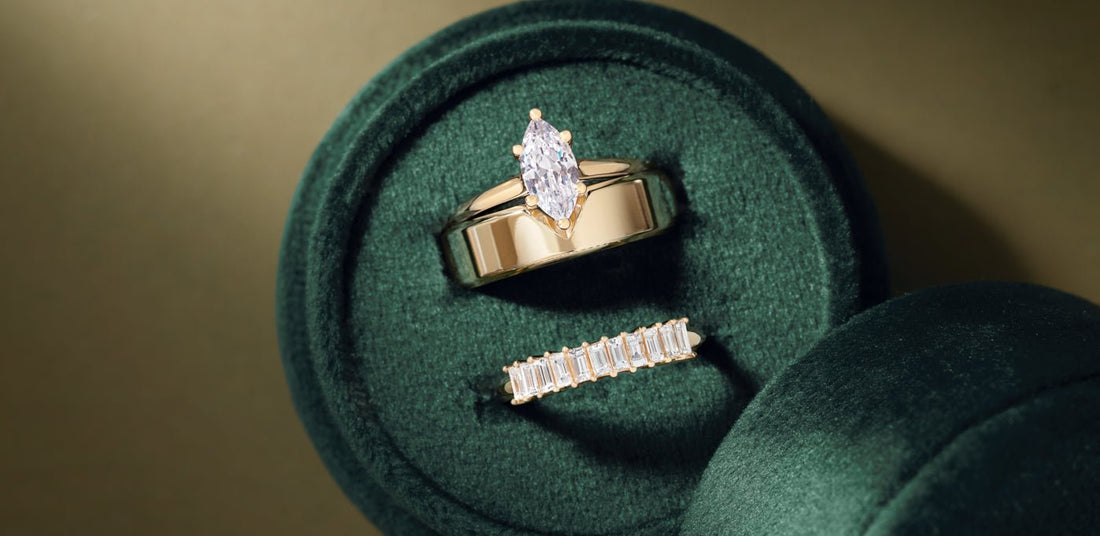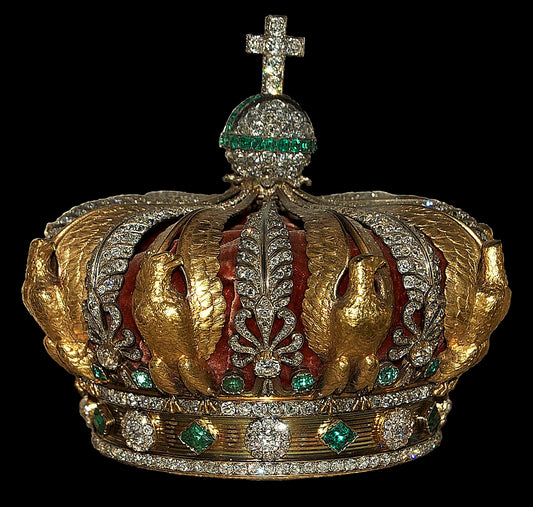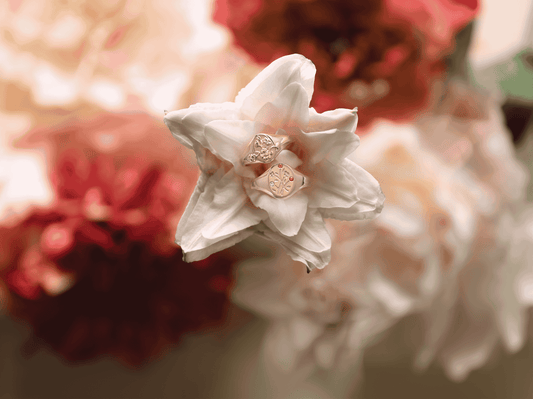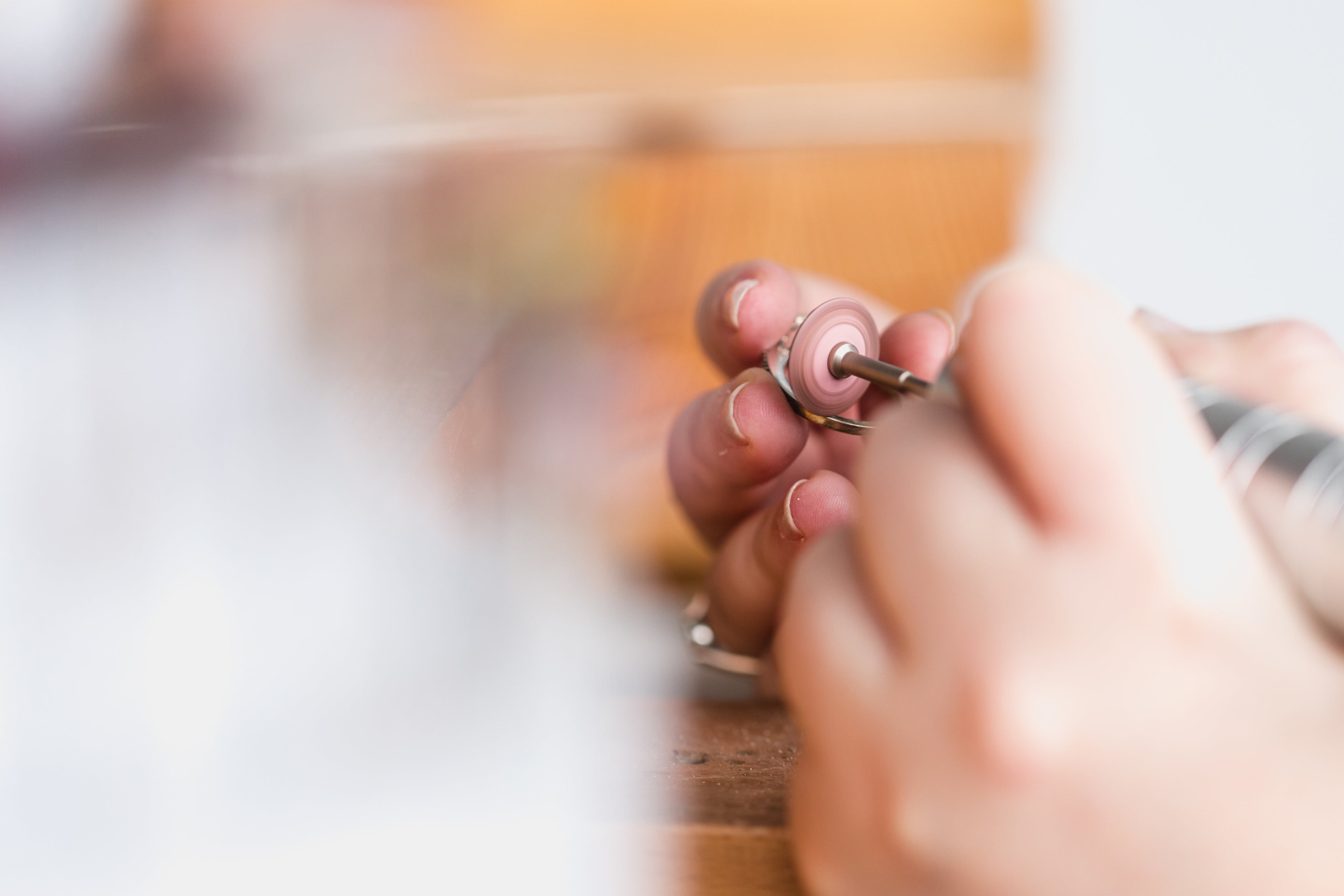There’s something quietly resolute about a solitaire engagement ring.
One stone. One setting. And yet, somehow, it speaks volumes. Across cultures, across centuries, this simple design has become one of the most recognizable symbols of love and commitment. But it wasn’t always the standard. The solitaire has a long and fascinating history—one shaped by craftsmanship, culture, and a steady evolution in what we choose to hold most dear.
A Ring for the Heart: Ancient Origins
The tradition of giving rings to symbolize betrothal reaches back to the ancient world. In Rome, couples exchanged bands made of iron or copper, often worn on the fourth finger of the left hand. That choice wasn’t arbitrary—the Romans believed this finger contained the vena amoris, or “vein of love,” which connected directly to the heart.
In the Middle Ages, rings began to incorporate gemstones—especially sapphires and rubies, believed to offer protection and clarity. Diamonds, at the time, were exceedingly rare. Their hardness was known, but their potential for brilliance hadn’t yet been unlocked. When they did appear in jewelry, it was typically in uncut or minimally shaped forms, worn more as talismans than as ornaments of sparkle.
Diamonds and Devotion: A Royal Precedent
The first known diamond engagement ring was given in 1477 by Archduke Maximilian of Austria to Mary of Burgundy. This singular gesture, made in a world where diamonds were nearly unobtainable, sparked a quiet trend among the European aristocracy. Diamonds, once a mark of wealth and political alliance, began to be associated with the language of love.
Still, through the 18th and 19th centuries, engagement rings were far from standardized. The Victorian and Edwardian eras brought ornate designs filled with filigree, seed pearls, enamel, and floral symbolism. Rings were romantic, sentimental, and deeply personal—each one a unique expression of the giver’s intention.
A New Era: The Solitaire Takes Center Stage
In 1886, Tiffany & Co. introduced a new kind of setting that would change the trajectory of engagement rings entirely. The Tiffany Setting, as it came to be known, used six prongs to lift a single diamond above the band—elevating the stone both literally and metaphorically. The design allowed light to enter the diamond from all angles, showcasing its brilliance in a way that hadn’t been possible before.
This clean, modern setting offered a striking contrast to the ornate styles of the era. It drew attention to the diamond itself—the cut, the clarity, the promise of permanence. Over time, this look became not just a preference, but a standard. The solitaire had arrived.
The Poetry of Old Cuts: Antique Diamonds and Their Influence
Before the rise of modern precision cutting, diamonds were shaped by hand, guided more by the crystal’s natural form than mathematical light performance. The result? Cuts that carry the signature of their time—and often, a softer kind of sparkle.

Rose Cut
Dating back to the 16th century, rose cuts feature a flat base with a domed top of triangular facets. They don’t offer internal brilliance like modern cuts, but their gentle shimmer is evocative—perfect for candlelight and quiet moments.
Old Mine Cut
Squarish in shape with a high crown, small table, and deep pavilion, this cut reflects the limitations and artistry of its era. Cutters worked with rudimentary tools and followed the octahedral geometry of diamond crystals. These stones often show broad flashes of light rather than pinpoint sparkle, and they possess a warmth that’s hard to replicate.
Old European Cut
A more symmetrical cousin of the mine cut, this style introduced a round outline and more uniform facets. Popular in the late 1800s and early 1900s, Old Europeans bridge the gap between early hand-cut stones and the modern brilliant.
These cuts shaped the design of their settings: closed-back bezels, higher prongs, and foiled interiors to enhance brightness. And though technology has advanced, their aesthetic remains influential today, especially among those drawn to a more personal, storied elegance.
The Mid-Century Shift: Marketing Meets Meaning
In 1947, De Beers introduced the now-famous line: “A diamond is forever.” It wasn’t just a slogan—it marked a cultural shift. Diamonds came to represent permanence, strength, and an idealized version of lasting love.
Coupled with post-war prosperity and expanding access to fine jewelry, the solitaire diamond ring became more than just an option—it became the symbol of engagement in much of the Western world. A clean setting with a single stone now meant more than beauty. It meant devotion, endurance, and the hope of something built to last.
Solitaire Rings Today: Tradition with Room for Personality
While the solitaire design is still beloved for its simplicity, today’s interpretations are anything but limited. Some clients choose a traditional brilliant-cut diamond in a classic setting. Others opt for heirloom stones, bezel mounts, east-west orientations, or colored gems.
There’s a quiet confidence in the form—a willingness to let a single element speak for itself. And whether you’re using a stone passed down from a loved one or starting a new tradition, the solitaire offers space for personal meaning within a timeless structure.
At Stradley & Daughter, Solitaires Have Soul
We love working with solitaire designs because they offer both restraint and possibility. Each one is a new canvas—and each one tells a story.
A few seasons ago, Julia came to us with a diamond her grandmother had worn for decades. It was an old mine cut, full of character, with a soft glow that didn’t sparkle so much as shimmer gently. Together, we designed a setting that honored its origin while making it feel wearable and relevant for Julia’s life today. The result wasn’t flashy, but it was unmistakably hers—and her grandmother’s, too.
That’s what makes solitaire rings so special. They’re not only about the moment—they’re about the lineage. The link between past and present, between the person who gives it, the one who wears it, and the future hands it may pass through.
The Quiet Power of One Stone
There’s a reason the solitaire has endured. Its clarity, its symbolism, its balance between restraint and meaning—it continues to resonate, generation after generation.
If you’re drawn to the idea of a ring that carries weight without excess, elegance without embellishment, a solitaire may be exactly right. Not because it’s traditional, but because it lets the most important elements—your story, your love, your legacy—shine.
Want to create a piece that reflects what matters most to you?
Book a consultation, and let’s design a solitaire that honors where you’ve come from—and where you’re going.





